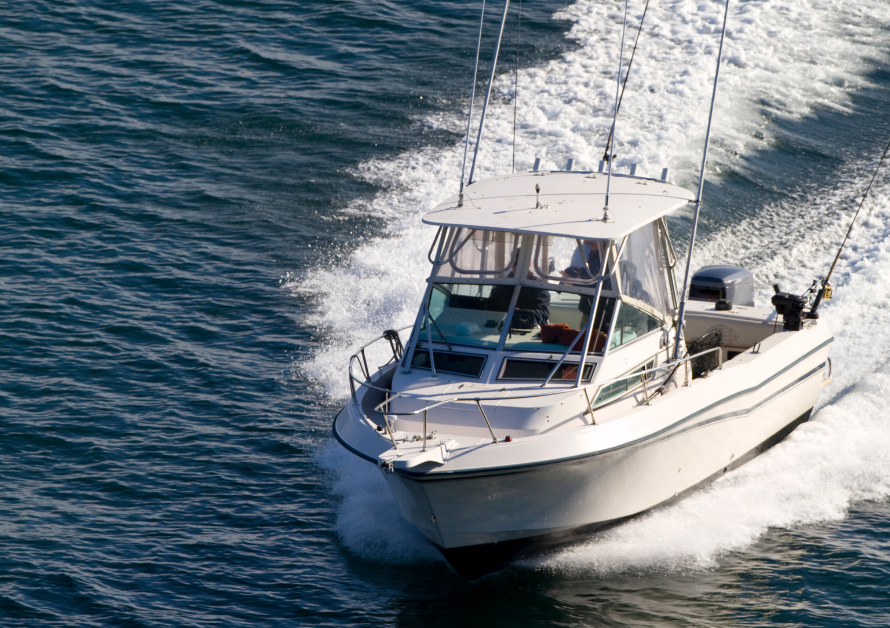In the world of water purification, desalination has often been surrounded by a cloud of misconceptions and myths. Many believe that the process is too costly, environmentally harmful, or inefficient. At ECHOTec Watermakers, we are dedicated to getting these myths debunked.
In this guide, we will debunk some of the most common myths surrounding desalination, providing clear, factual insights into how this innovative technology is helping to secure sustainable water sources for communities around the world. Let’s dive into the truth behind desalination and dispel the myths that have long overshadowed its potential.
Debunking Myths About Desalination and Watermakers
Common myths about desalination and watermakers include:
Desalination Is Too Expensive
- Myth: Many believe that desalination is prohibitively expensive and only viable for wealthy people and nations.
- Reality: While desalination used to be costly, advances in technology have significantly reduced costs, making it a more accessible solution in many regions, especially where freshwater is scarce.
Desalination Environmental Impact
- Myth: Desalination processes are often thought to be damaging to the environment, particularly concerning brine discharge and energy consumption.
- Reality: Modern desalination technologies, like those used by ECHOTec Watermakers, are designed with environmental considerations in mind. These considerations include energy-efficient processes and responsible brine management to minimize ecological impact.
Desalinated Water Is Unsafe to Drink
- Myth: Some believe that water produced through desalination is not as safe or clean as naturally sourced freshwater.
- Reality: Desalinated water is highly purified and often exceeds drinking water standards, ensuring it is safe and suitable for consumption.
Desalination Is Only for Coastal Areas
- Myth: It’s commonly assumed that desalination is only useful for coastal regions with direct access to seawater.
- Reality: Desalination can be applied to various water sources, including brackish groundwater and wastewater, making it a versatile solution for inland areas as well.
Watermakers for Boats
- Myth: There’s a belief that watermakers are only practical for large ships or industrial applications.
- Reality: ECHOTec Watermakers offers a range of watermaker systems. We have some designed for small boats, others for yachts, and we even fit systems in remote homes, providing fresh water in diverse situations.
Desalination Consumes Too Much Energy
- Myth: A common misconception is that desalination requires excessive amounts of energy, making it unsustainable.
- Reality: Technological advancements have made desalination more energy-efficient, with renewable energy sources increasingly being integrated to further reduce its carbon footprint.
Desalinated Water Tastes Bad
- Myth: Some people think that desalinated water has a poor taste compared to freshwater from natural sources.
- Reality: Properly desalinated water is essentially pure, and any taste differences can be adjusted through remineralization, making it comparable to or even better than other water sources.
These myths often arise from outdated information or misconceptions. However, with modern technology and practices, desalination and watermakers offer viable, safe, and environmentally friendly solutions to water scarcity.
How These Myths Arise and Why We Need Myth-Busting
Often, the myths surrounding desalination and watermakers arise from a combination of outdated information, misunderstandings of the technology, and concerns rooted in past practices. These misconceptions can be traced back to the early days of desalination, when the technology was less efficient, more expensive, and had a larger environmental footprint. Over time, as desalination technology has evolved, many of these outdated notions have persisted, leading to a skewed perception of what modern desalination and watermakers can truly achieve.
Historical Context and Outdated Information
In the past, desalination was indeed a costly and energy-intensive process, often reserved for wealthy nations or regions with no other options. This led to the perception that desalination is universally expensive and unsustainable. However, as technology has advanced, these costs have dropped significantly, and energy efficiency has improved. Despite these advancements, the lingering memory of earlier challenges has perpetuated the myth that desalination is still impractically expensive and harmful.
Misunderstanding of Technology
Many myths also stem from a lack of understanding about how modern desalination and watermaker systems work. For example, concerns about environmental impact often overlook the strides made in minimizing brine discharge effects and the use of renewable energy. Additionally, the belief that desalinated water is unsafe or has poor taste is rooted in a misunderstanding of the purification process. Modern systems like those from ECHOTec Watermakers produce water that meets or exceeds safety standards, ensuring it is pure, clean, and palatable.
Fear of the Unknown
Fear and skepticism often accompany new technologies, and desalination is no exception. When people are unfamiliar with how desalination works, they may be more susceptible to believing myths, especially if these myths align with their preconceived notions about complex industrial processes. This fear can be exacerbated by negative media portrayals or anecdotal evidence that highlights the worst-case scenarios rather than the typical outcomes.
Putting These Myths to Rest
The key to dispelling these myths is education and transparency. By providing clear, factual information about how desalination and watermakers operate today, we can help people understand the realities of the technology and its benefits.
- Public Awareness Campaigns: Engaging in public awareness campaigns that explain the advancements in desalination technology can help shift perceptions. Highlighting case studies and real-world examples where desalination has been successfully and sustainably implemented can illustrate its effectiveness.
- Transparent Communication: Companies like ECHOTec Watermakers can lead by example, offering transparent communication about their processes, environmental impact, and water quality. By openly addressing concerns and showing how modern systems mitigate past issues, they can build trust with the public.
- Education and Outreach: Partnering with educational institutions, environmental organizations, and community groups to provide educational resources about desalination can also help dispel myths. Workshops, webinars, and informational materials can equip people with the knowledge they need to understand and appreciate the benefits of desalination.
- Highlighting Technological Advances: Emphasizing the technological innovations that have made desalination more cost-effective, energy-efficient, and environmentally friendly can counteract outdated perceptions. Showcasing the integration of renewable energy sources and improved brine management practices can demonstrate how desalination has evolved and continues evolving to meet modern needs.
By addressing the roots and getting these myths debunked while actively working to educate the public, we can put these misconceptions to rest and foster a more informed and positive view of desalination and watermakers. As these technologies continue to improve, they will play an increasingly vital role in providing sustainable water solutions for communities around the world.
Contact ECHOTec Watermakers for Clean Water Solutions
Understanding the truth behind desalination and watermakers is essential for appreciating their role in providing reliable and sustainable water solutions. ECHOTec Watermakers is committed to debunking myths and delivering top-quality sailboat desalination, powerboat watermakers, and yacht desalination systems that meet the needs of today’s water-conscious consumers.
For more information or to explore how our advanced systems can benefit you, don’t hesitate to contact us. Then, be sure to check out our blog page for the latest insights and updates on desalination technology.
Related Readings:



